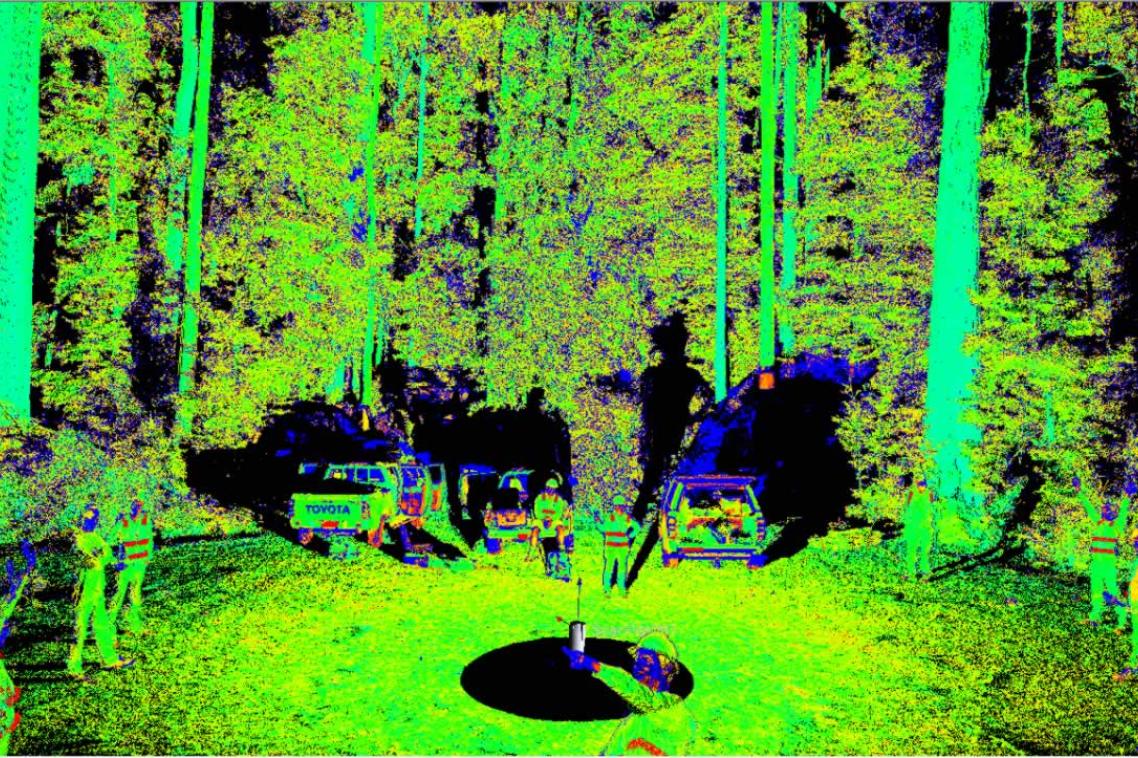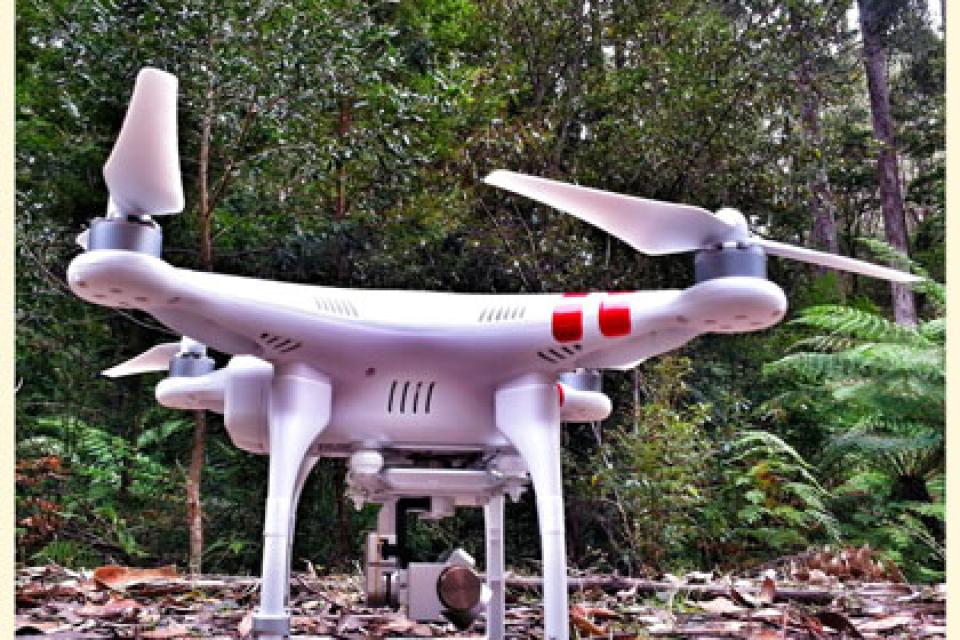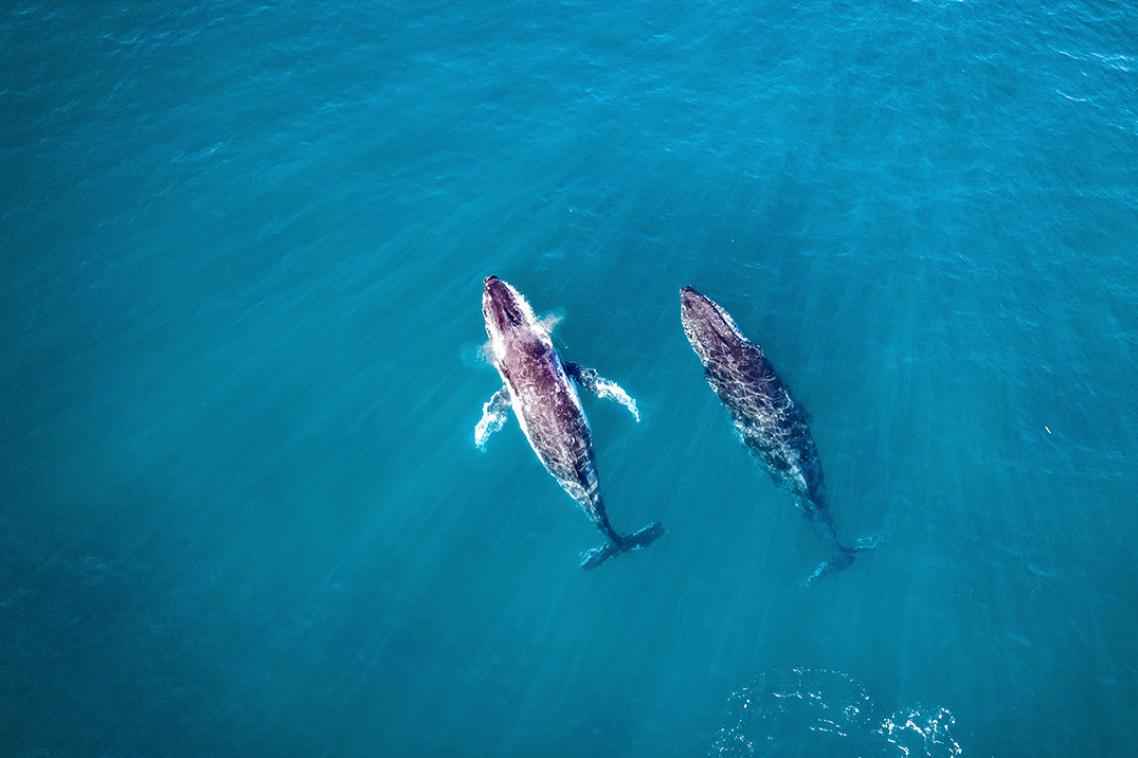Modern technology monitors World Heritage forests

Drones, laser scanners, planes and sharp shooters have been put to work in the Tasmanian forest to better understand the environmental effects of forest management regimes.
Researchers from The University of Queensland worked with CSIRO, Forestry Tasmania and the University of Tasmania to comprehensively measure and assess a twenty five square kilometre area known as the Warra Tall Eucalypt SuperSite.
UQ’s Dr Peter Scarth was part of the team who spent a week in the field capturing 3D scans, leaf samples and aerial images of the site.
“The Warra Tall Eucalypt SuperSite we studied is partly within the Tasmanian Wilderness World Heritage area, which is managed for conservation, and partly within State forest, which is managed for multiple purposes including wood production,” Dr Scarth said.
“These forests are among the most productive ecosystems in the world and their management generates a high level of social and political interest.
“By consistently monitoring and comparing structural and biodiversity indicators across the World Heritage and State forest areas, we can determine the long-term effects of forest management regimes and measure how environmental change is affecting the forest.”
The researc

“Parts of this forest have remained unburnt for over 150 years, but other sites have been burnt in more recent times giving us a useful comparison to understand the effects of fire management,” Dr Scarth said.
“This work was a significant investment of time and money so we will be making all the data we collected freely available for others to access and use.
“We hope it will contribute to improving environmental monitoring at local, state and national levels.”
The project was supported by the Terrestrial Ecosystem Research Network, which manages 10 ‘SuperSites’ - areas which represent significant ecosystems - across Australia.
These sites are consistently monitored to detect changes to flora, fauna and environmental processes in order to understand the response of these ecosystems to environmental change.
You can read more about the fieldwork on Dr Peter Scarth’s blog.
Media: Dr Peter Scarth, 0439 744 397, p.scarth@uq.edu.au
Second image caption: One of the Unmanned Aerial Vehicles, or drones, used by researchers. Photo: Peter Scarth.
Related articles

Decades of surveys show whale migration shift

Should you consent to your doctor using an AI scribe? Here’s what you should know.
Media contact
UQ Communications
communications@uq.edu.au
+61 429 056 139
